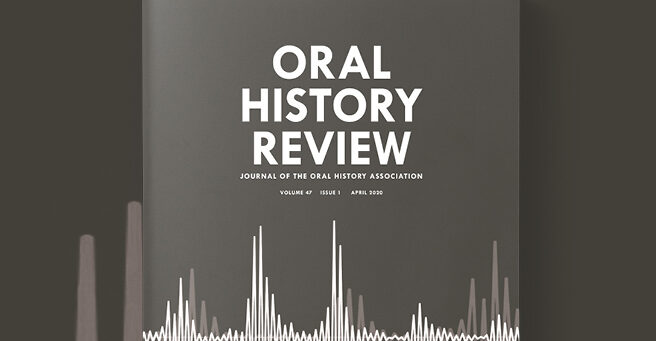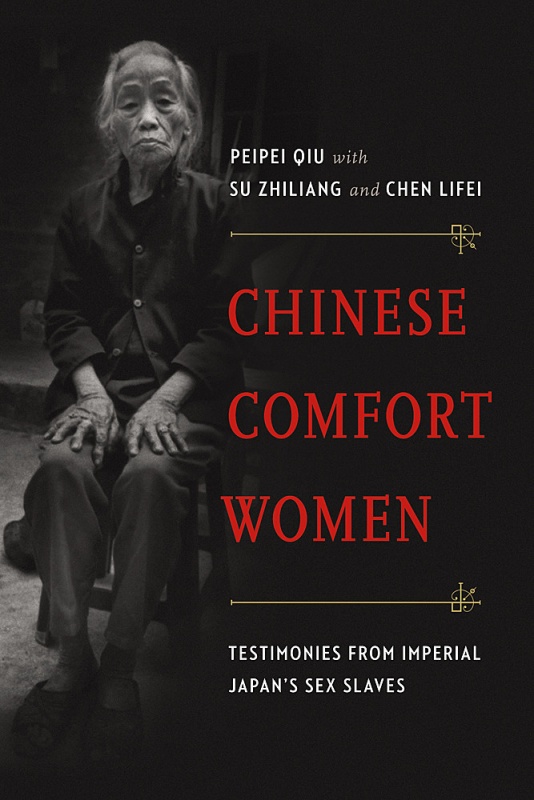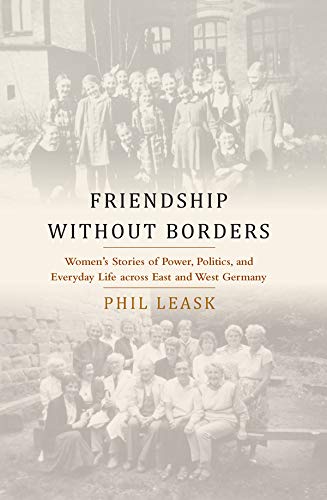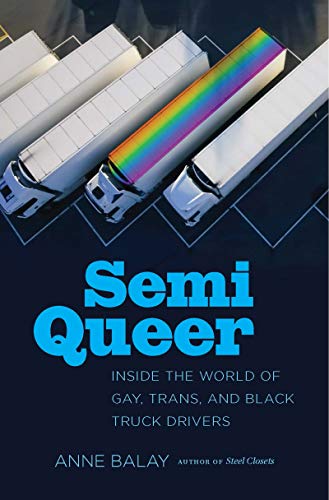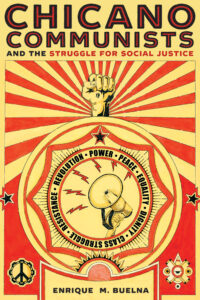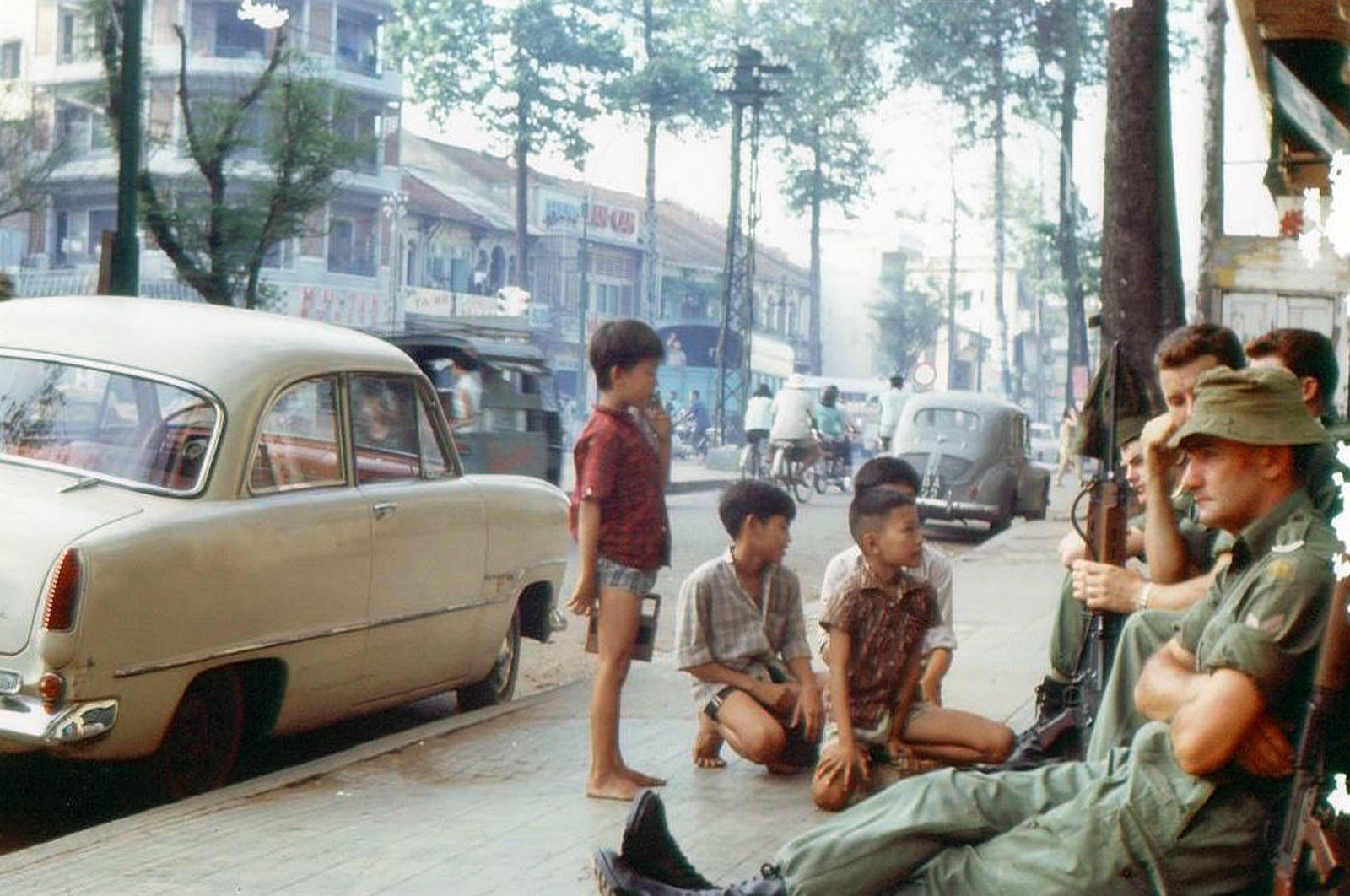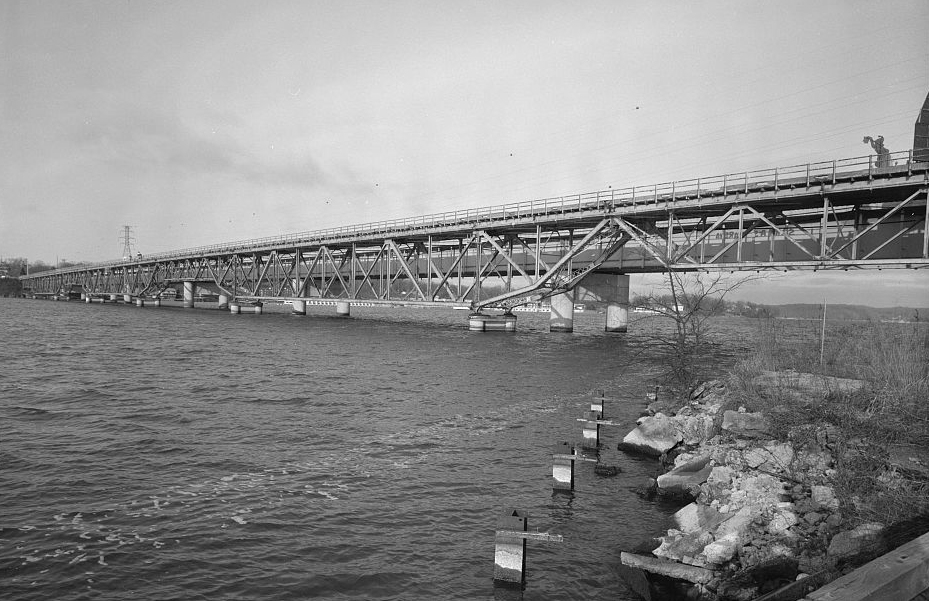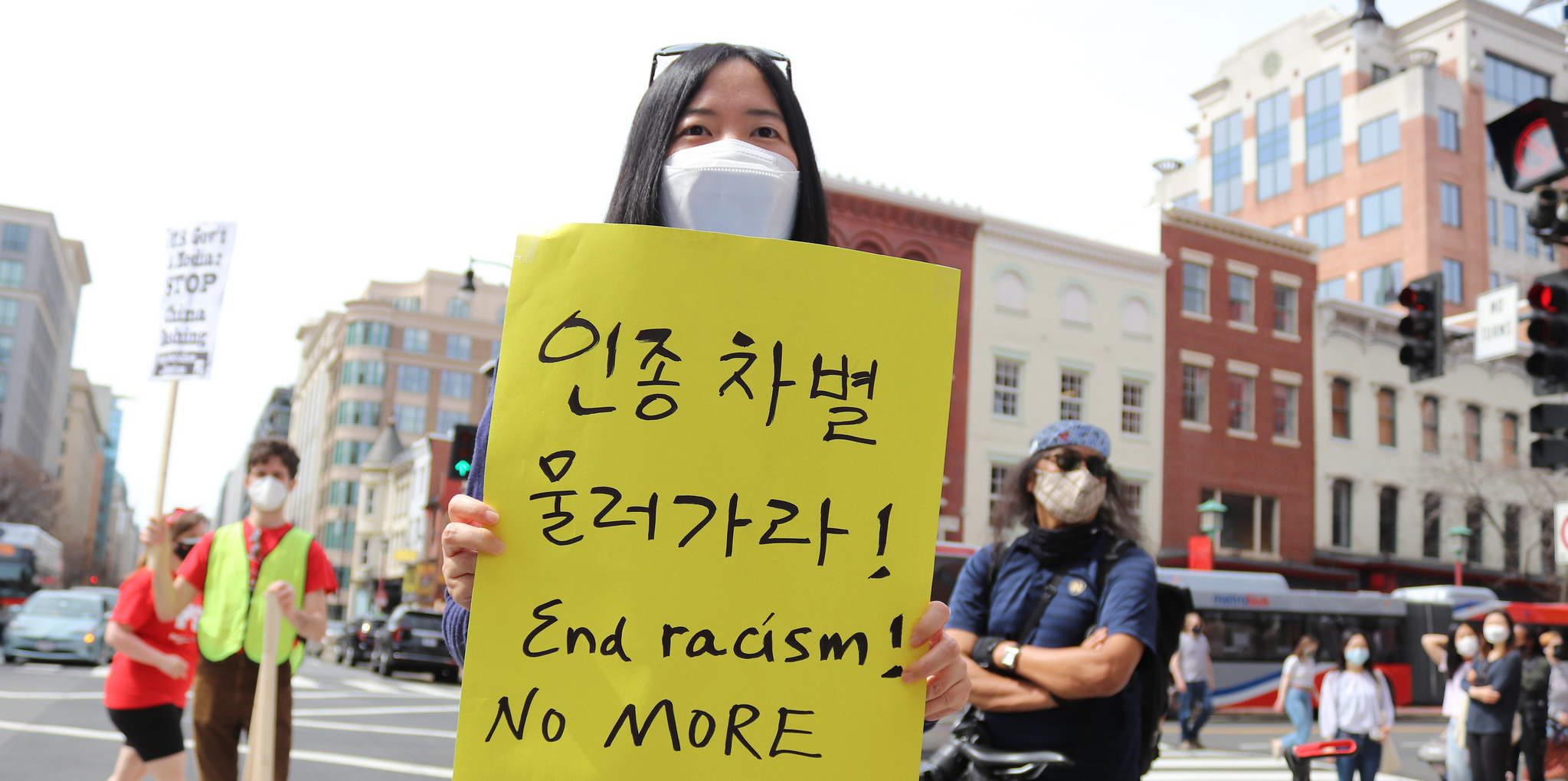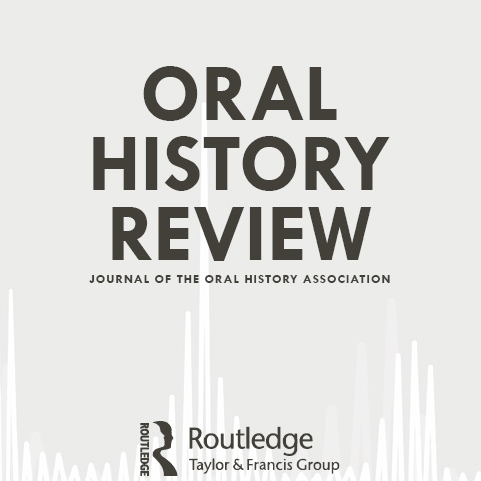In this guest post, Sarah O’Brien reflects on the role of oral history within a culture of storytelling through the lens of Ireland’s difficult past involving pregnancy outside of marriage, showing how oral narratives coupled with artistic practices have returned dignity and voice to those who have been silenced by the state.
By Sarah O’Brien
On 10 February 1946, a young woman named Peggy McCarthy struggled toward the entrance of a hospital in Killarney, Co. Kerry. She had spent the hours before traversing a web of dark, unsurfaced roads in the West of Ireland, in the pangs of childbirth. This long, painful journey through Co. Kerry should not have been necessary. Peggy’s local hospital was less than four miles away from her rural home in Listowel where, with the aid of her mother and a midwife, she had gone into labour. When the birth became complicated, a neighboring hackney driver, John Guerin, rushed Peggy to get medical assistance in Listowel. However, when they arrived, the nun overseeing the premises refused them entrance. Peggy had become pregnant outside of marriage and was not deemed ‘respectable’ enough to give birth alongside married women. Panicked, John Guerin drove Peggy along a further 16 mile stretch of poor roads to the next hospital in Tralee. There, she was once again refused admission. The two continued to Killarney, another 20 miles away, Peggy now writhing in agony in the back of the car. Near the doorway of the third hospital, she finally gave birth to her daughter. Minutes later, Peggy died.
In Killarney, John attached the coffin containing Peggy’s body to the roof of his car and drove her back to their native village, to be mourned by her community. However, when the mourners arrived at the churchyard, they found that the gates had been locked to the gathered congregation. Even in death, Peggy was denied a place in ‘decent’ society.
Despite the efforts of church authorities to forget that this had happened, Peggy’s local community—many of them rural men and women—found subversive ways to keep her memory alive. Years after the event, Tony Guerin from Listowel, whose father John had driven Peggy from hospital to hospital, wrote a play called Solo Run, in commemoration of what happened to Peggy in 1946. It played in local theaters in Co. Kerry, to audiences that had heard the echoes of Peggy’s name passed down from generation to generation, in the privacy of their homes. In turn, Peggy’s brother, Seán McCarthy, wrote a ballad about his sister’s death, which circulated through the folk-singing circles of Ireland in the 1960s. Growing up near North Kerry, I can remember hearing the haunting harmonies of that tune, sung in our farm-kitchen by visitors in the days after Christmas. The song’s title: “In Shame Love, In Shame”:
Now hush little darling we soon will be there,
A blanket of love will surround you with care,
No vile tongues will whisper you will never feel pain,
Hear the Nightingale crying in shame love, in shame.
The role of art in keeping subaltern stories like Peggy’s alive is not unique to the people of Listowel. Records of the eighteenth-century Irish bardic tradition recall the preservation of historical events from ille tempore through the regenerative rhymes of the community poet.[1] Together with poets, musicians and singers, Irish history-tellers or staireolaigh played a critical role in preserving memories of community happenings.[2] History-telling created an intersection between the individual and society, enabling tellers to hone their orature while fulfilling the obligation to commemorate and preserve their community’s often tragic past. The phrase “ó ghlúin go glúin’ translates from Irish to English as ‘from knee to knee.’ It evokes the intimacy through which such memory-histories were transmitted, from one generation to the next, mouth to ear, body to body.

Famed seanchaí Peig Sayers. Credit: Duchas.ie Photographic collection. M001.18.00299
A key feature of Irish oral tradition has been its commitment to truth. Ethnographic studies of the twentieth century show the careful research that Irish staireolaigh undertook when collecting stories. Peig Sayers, a famed seanchaí from Co. Kerry, took pains to particularize her stories of the Irish Famine with the names of people and places, evidencing that these were not simply narratives for entertainment but were “intended to be believed.” Analyzing Peig’s narratives of the Famine, Patricia Lysaght concludes that the forensically researched and detailed Famine stories told by Peig “calls for the suspension of disbelief on the part of the listener, and invites him or her to follow in the mind’s eye, the tragic itinerary of a mother or wife to the cemetery carrying a lifeless human burden strapped to her back.”[3]
In turn, Henry Glassie’s 1970s study of the history-tellers of Ballymenone in Co. Fermanagh uncovered a community of oral history-tellers who refined the accuracy of their community’s history through intense collective debate. By the fireside, Ballymenone’s history-tellers reviewed their trove of historical tales, debated their finer details, analyzed their sources and postulated theories on where the precise events of a story took place in the surrounding landscape. Like professional historians, they triangulated their sources to build a more complete picture of the past. Unlike professional historians, they tolerated variation and change in the life course of a historical narrative. “The responsibility of Ballymenone’s historians,” Glassie wrote, “is to gather the facts on regional events and build them into stories. Too much lies beyond knowing: no single narrative could compass the whole.”[4]

“Star” History-Teller Hugh Nolan. Source: Henry Glassie, The Stars of Ballymenone, Indiana University Press, p.153
Oral history in Ireland was understood as an ethical responsibility, to be completed alongside, and shared with, the surrounding community. The narratives that staireolaigh collected and told reflected the community’s trails and traverses, losses and gains, victories and defeats. Over time, these built to a unifying community history that testified to endurance and survival. By listening to stories of their shared past, local audiences restored their sense of responsibility toward each other. “Agreement is the desired end of the ceili’s conversations”, Glassie concluded, after a decade of oral history recording and analysis in Ballymenone:
Quiet words of affirmation, revolving in repetition, mean there is no dispute among us. The harmony of night talks confirms community; we remain ready to act as one when daylight strikes.[5]
Tellers thus crafted stories to please the ear, rich in rhyme and repetition, narrated and performed to bring comfort and beauty to their listeners. Amidst the magic spark of such fire-lit performance, the role of historian and artist became one.
The oral narration of history was understood, finally, as an artistic performance. Framed by conditions of poverty, marginalization and violence, staireolaigh like those in Ballymenone understood the consoling and redemptive power of art for their demoralized audiences. Tellers thus crafted stories to please the ear, rich in rhyme and repetition, narrated and performed to bring comfort and beauty to their listeners. Amidst the magic spark of such fire-lit performance, the role of historian and artist became one. The teller transcended the deprivation of their surroundings, metamorphizing through the telling of history into the community’s most precious star.[6]
On 12 January 2021, the Irish government published a 3000 page document entitled the “Final Report of the Commission of Investigation into Mother and Baby Homes.” It was based on 550 oral histories recorded with survivors of a number of institutions that operated in Ireland in the twentieth century.[7] An estimated 56,000 unmarried mothers and 57,000 children were contained in mother and baby institutions in Ireland during the twentieth century: the highest proportion in the world.[8] The report confirmed what Irish society already suspected: that Mother and Baby Homes were sites of coercion, exclusion, shame and death. They were places where unmarried mothers were sent to give birth in secret, often without access to pain-relief. They were sites of forced separation, where babies were given up for adoption under dubious legal circumstances. And, as a consequence of the commission of inquiry’s taciturn attitude to the collection and communication of these oral histories, the Mother and Baby home remains a liuex de mémoire for the dark and unresolved history of twentieth century Ireland.[9]
Concerns about the commission’s ethical stance surfaced early in the collection of survivors’ oral histories. In spite of human rights best practices and many requests from Irish society, the commission refused to allow women’s oral histories to be heard in public. Furthermore, it refused to provide those that testified to their experiences with transcripts of their oral histories. Finally, following the report’s publication, the commission revealed that all of the audio files containing women’s stories had been destroyed. In the words of activists Maeve O’Rourke and Claire McGettrick, the Mother and Baby Home commission had “denied affected mothers and their children access to the language, personal records and administrative archives required to record and articulate their history.”[10]
Soon after the report’s publication, survivors and members of the public responded in outrage to what they identified as the report’s inaccurate treatment of survivors’ stories. Tony Guerin, now in his elder years, made a call to a popular radio show to decry the report’s mistake-laden references to his deceased neighbor, Peggy McCarthy. The report stated that Peggy had died in childbirth and that she had intellectual difficulties. “Where did they get that from?” Tony demanded, incensed at this false evaluation of her mental health. “They have marched Peggy back up to Calvary, and to a hill beyond Calvary,” Tony cried, his sobs ringing over the static of the radio.
The commission of inquiry did not consider itself an oral history project, and cannot be judged on these terms. However, its reliance on oral histories for the production of their report blurs the lines between legal and oral historiography and casts doubts over the effectiveness of the latter to accurately capture the horrors of the past. As a thought experiment, it is also interesting to compare the treatment of these women’s oral histories by the commission against the traditional methods of staireolaigh. The sterile, detached, and judgmental tone of the report, the commissioners’ refusal to engage the pubic in its telling, its apparent disregard for participants’ wishes to access records of their own stories, and its ultimate destruction of all audio evidence indicates a complete break with oral historiography methods, past and present. The result is an oral-history based state investigation that has done little to heal, unify, or aesthetically rejuvenate the memories of Ireland’s cruel treatment of unmarried mothers and their children during the twentieth century.
Against this tide of detached state inquiry, an appositional undercurrent of commemoration has gained force. Armed with oral histories, Irish artists have stepped out to play leading roles in the re-telling of the nation’s history of abuse against unmarried mothers and their children. In Galway, the Tuam Oral History Project has united artists and historians in a project that embeds survivors’ oral histories into publicly-accessible podcasts. The episodes are rich, immersive audible experiences narrated by actor Cillian Murphy, interspersed with poems by writer Elaine Feeney and led by the voices of those who survived the notorious Tuam Mother and Baby Home. [11]
On 17 March 2021—Ireland’s national feast day—the national theatre of Ireland on Abbey Street broadcast a new production. Entitled Home: Part One, it responds directly to the report on Mother and Baby homes, narrating the oral histories provided by survivors through the voices of some of Ireland’s best known actors. This follows the 2011 production of Laundry, a site-specific play by Louise Rowe in which audiences circulate through Gloucester Street Magdalene Laundry in north inner-city Dublin, encountering at close range its female inmates. Laundry, as noted by reviewer Sara Keating was “not just an act of public disclosure but of social questioning.” Standing feet away from the play’s actors, watching the women genuflect, bathe, and work, the audience was forced to reflect on Irish society’s own complicity in the past:
Should you reach out to comfort the young woman who genuflects in front of you so closely that her head almost touches your knees? Should you help the fragile young woman out of the bath, bind her breasts for her again when she invites you to? Should you stay to protect her when the supervising nun forces you out?[12]

Actor Sorcha Kenny playing one of the “Maggies” in the 2011 play Laundry. Source: Anuproductions.ie
Call this oral history, call it oral tradition: whatever the label, it indexes the retention, regeneration, and reconstitution of the role of orality in Ireland as a unifying artistic medium.[13] Through local, bottom-up, community collaboration, oral-based history and artistic endeavor have found a way through the horrors of the past to return dignity and voice to those who continue to be silenced by the state. In the words of acclaimed Irish writer and poet, Doireann Ní Ghríofa, oral literature in Ireland has kept stories alive in women’s bodies when all else failed, a glint of the bright through the darkness of the past. Writing for Fallow Media, an Irish artist-led website, Ní Ghríofa reflects:
This is the genre of story told by the firesides of those who survived devastating hunger, by those who saw neighbors die of fever or starvation. The stories are told and told and re-told, passed from mouth to mouth, from the elderly to the young. The old people hear the echoes of their music and laughter. They see their lights, still.[14]
The emergence of Fallow Media is, in itself, a metaphor for the coalescence of artistic and oral history ideals at a time of collective mourning. In the introduction of Fallow’s first print-publication, Fallow’s founder Ian Maleney writes about the necessity of finding new media though which to tell our stories: “It is not just about making pretty things for people to enjoy. It has come to seem like a deeper issue of communication. What do we lose by giving up control of the channels we use to speak with each other?”[15]
The title of Fallow Media’s debut collection strikes a suitably poignant tone: “Some good will come.” Suggesting hope in the midst of despair, it angles our thoughts toward the possibility of a brighter future – a future irrigated, perhaps, by the vernacular traditions of artistic commemoration tenaciously pursued by everyday people in the face of censorship and shaming.
The tragic story of Peggy McCarthy did not end on the night she died in 1946. The baby that she gave birth to survived and was christened Breda. She was brought up by Peggy’s parents, in the family home in Listowel, amidst a loving kinship network. However, when Breda turned 18 year old, a priest arrived at the family home and took her away. She spent the rest of her life enclosed in a series of Magdalene laundries, robbed of a normal womanhood because of her mother’s ‘sin.’ In 2015, an audio documentary about Peggy and Breda aired on national radio, written and produced once again by Peggy’s old neighbors in Listowel. Listening to it in my car whilst spiraling along dark country roads in the midst of winter, the words of the song that I had heard many years ago in my own kitchen came back to me, with sudden and ferocious intensity. Through melody, the kaleidoscope of memory was turned, releasing an outpour of grief for a young woman rescued from the grip of shame through the redemptive power of art. Seán McCarthy’s song for his sister reached its full crescendo:
How mute are the birds now, my bonny young boy,
How deep is the river, how silent your cry,
Let the water baptise you, then we’ll both hear a name,
Hear the Nightingale sing, there’s no shame, there’s no shame.
[1] Vincent Morley, The Popular Mind in Eighteenth Century Ireland (Cork University Press, 2017); Pádraigín Riggs, ed., Giolla Brighde Mac Con Midhe: The Poet and his Craft. Irish Texts Society Series 31 (2019); F.J. Byrne, “Senchas: The Nature of Gaelic Historical Tradition,” Historical Studies 9 (1974): 137-59.
[2] Guy Beiner compares staireolaigh to the African griots, both of whom were specifically skilled in narrating history. These Irish history tellers “became informal archivists by assuming the role of custodians of oral communal records. They processed these historical sources for benefit of the community… their work typically took place in specific contexts but was then shared with wider audiences, who participated in its dissemination and reinterpretation.” Guy Beiner, Forgetful Remembrance: Social Forgetting and Vernacular Historiography of a Rebellion in Ulster (Oxford: Oxford University Press. 2018), 12.
[3] Patricia Lysaght, “Perspectives on Women during the Great Irish Famine from the Oral Tradition,” Béaloideas 64/65 (1996): 128.
[4] Henry Glassie, The Stars of Ballymenone (Bloomington: Indiana University Press, 2006),136.
[5] Glassie, 64.
[6] Glassie continues on pg 64:, “The one who can perform such satisfying and useful verbal feats, the ones who can put an uncommon word on a common thing, who can take a fix on the daily travail and extend it hyperbolically until it wrenches a laugh from the depths, making a joke out of misery – such country cousins, they call stars.” The Stars of Ballymenone.
[7] The CLANN project has played an important role in disseminating information about the Commissioning report on the Mother and Baby Homes and in supporting oral history participants who provided evidence to the commission.
[8] See the Executive Summary of the Final Report of the Commission of Investigation into Mother and Baby Homes, 2.
[9] Admirable scholarship in Ireland over the last two decades has helped to recover the experiences of survivors of institutional abuse. See Lyndsey Earner-Byrne, Mother and Child: Maternity and Child Welfare in Dublin (Manchester: Manchester University Press, 2007); Emilie Pine, The Politics of Irish Memory: Performing Remembrance in Contemporary Irish Culture (London: Palgrave, 2011); James J. Smith, “The Politics of Sexual Knowledge: The Origins of Ireland’s Containment Culture and the Carrigan Report,” Journal of the History of Sexuality, 13. n 2 (2004): 208-33; Maeve O’Rourke, “Ireland’s Magdalene laundries and the State’s Duty to Protect,” Hibernian Law Journal 10 (2011): 200-237; Industrial Memories, UCD Online project.
[10] “Mother and Baby Homes Inquiry’s lack of transparency was damaging,” Irish Times, 25 January 2021.
[11] The Mother and Baby ‘home’ at Tuam, Co. Galway, has become particularly notorious since an investigation of its grounds uncovered a large number of infant remains on the home’s grounds. An estimated 800 infant bodies along with the remains of a number of women were found on the site, inside of a sewerage repository. See the Fifth Interim Report of the Commission of Investigation into Mother and Baby Homes.
[12] Sara Keating, “Laundry,” Irish Theatre Magazine, 29 September 2011.
[13] Guy Beiner, among others, has leveled criticism at the false differentiation that Jan Vansina makes between oral history and oral tradition. For Beiner, “historical traditions appear in Irish folklore in different forms, mainly from storytelling but also in placenames, songs, poems, sayings and proverbs. There is no specific genre designated for the narrating of historical information.” See Beiner, “Richard Hayes, Seanchas-Collector Extraordinaire: First Steps Towards a Folk History of Bliain Na BhFrancach: The Year of the French,” Béaloideas 68 (2000): 16.
[14] Doireann Ní Ghríofa, “Mandible,” Some Good Will Come, Fallow Media (2020), 16.
[15] Ian Maleney, “Introduction,” Some Good Will Come, 4.
Sarah O’Brien is an oral and cultural historian in Mary Immaculate College (MIC), University of Limerick. She completed a PhD in Oral History in 2009 in MIC, supported by a doctoral scholarship from the Irish Research Council. She carried out postdoctoral research in Buenos Aires where she completed an oral history of the Irish descendant community in Argentina. This research won the Riocht na Midhe historical scholarship award of 2012 and was published as a monograph in 2018 by Palgrave Macmillan. Subsequent academic appointments included lectureships in Adams State University, USA (2013) and University of Northern New Mexico (2014). From 2015 to 2020 she was Assistant Professor in the School of Linguistics, Speech and Communications Studies, Trinity College Dublin. She has published widely in the field of oral history. Her latest book, Of Memory and the Misplaced, explores the memories of Irish immigrant women in the United States and is under contract with Indiana University Press.
Featured image: Grounds of the Good Shepherd Magdalene laundry and orphanage, Sunday’s Well, Cork City. Photo Credit: Mark Davis, reprinted with permission from the photographer
